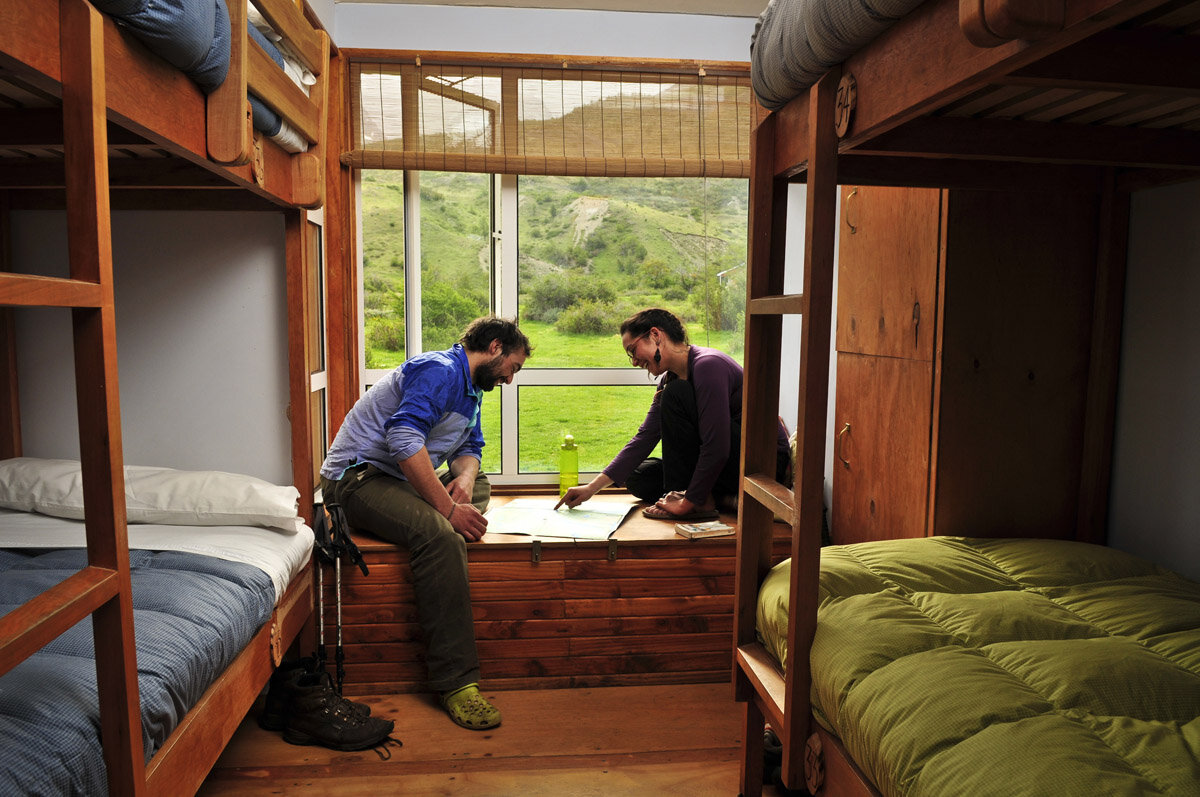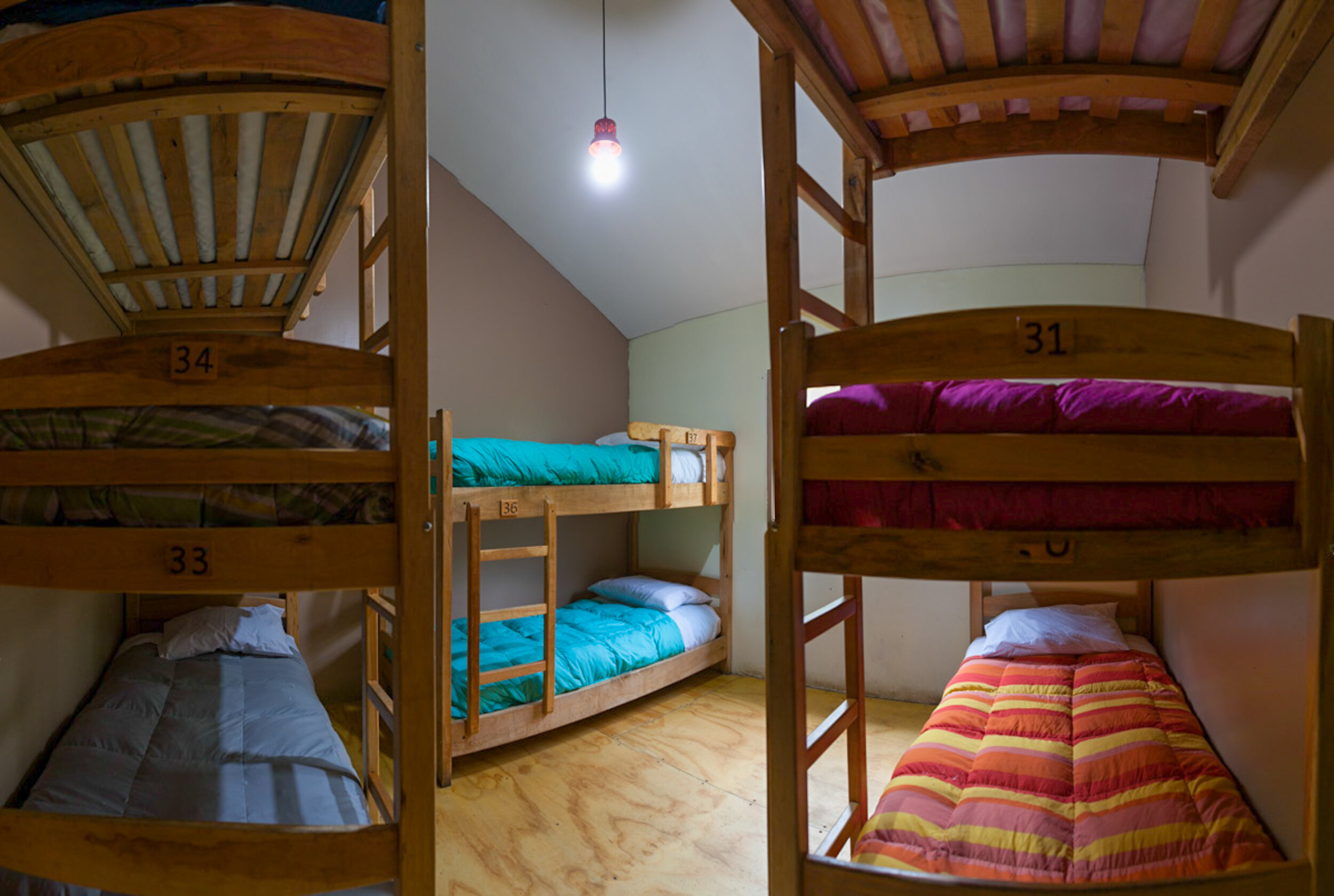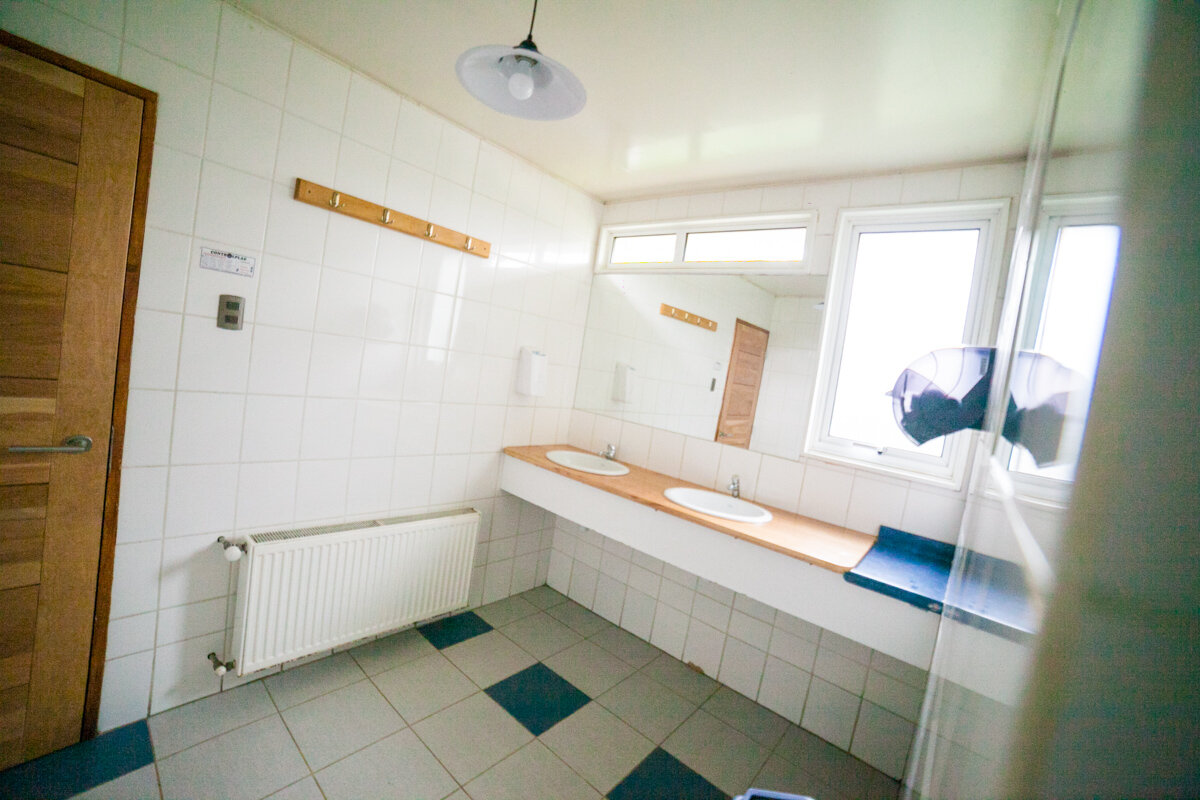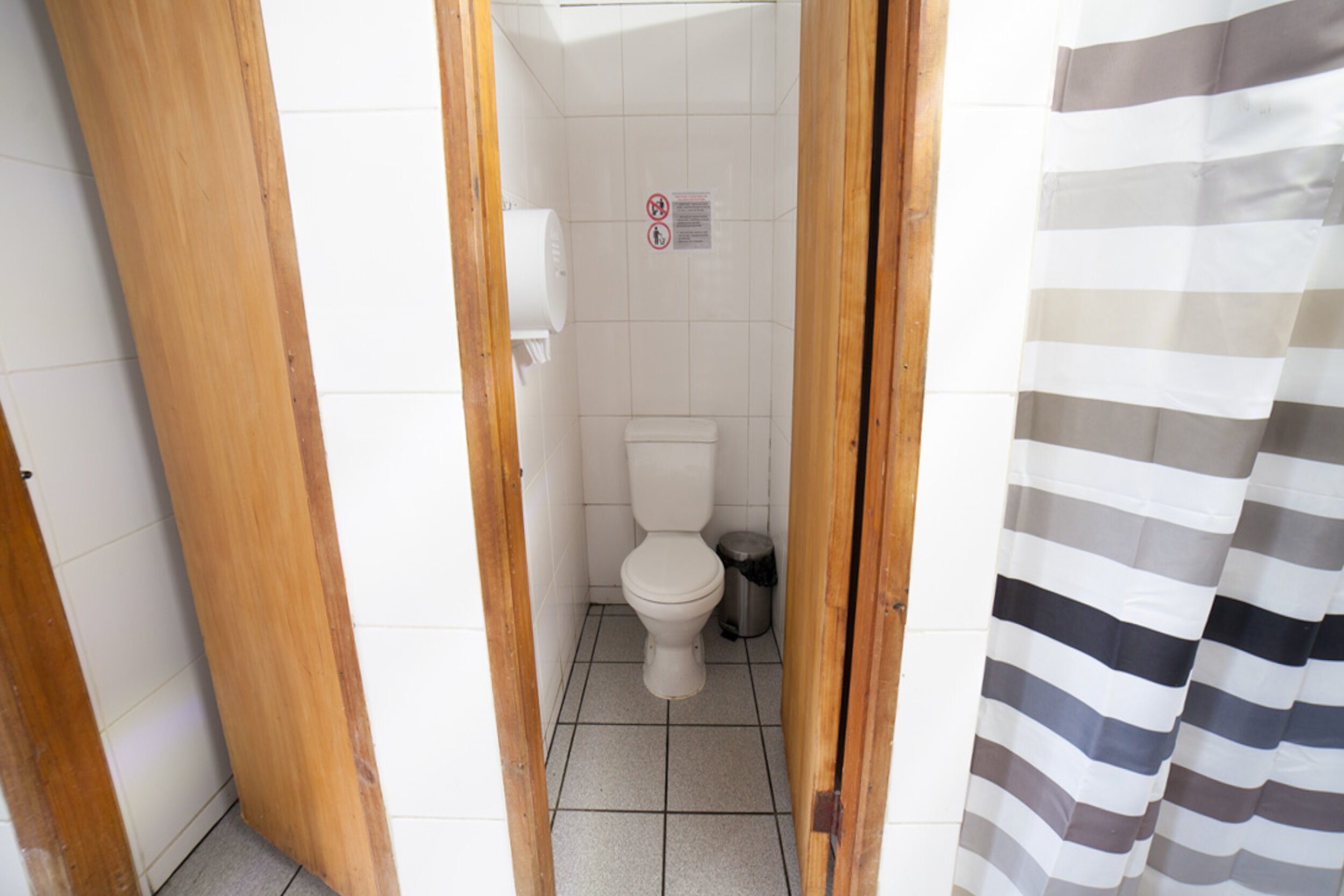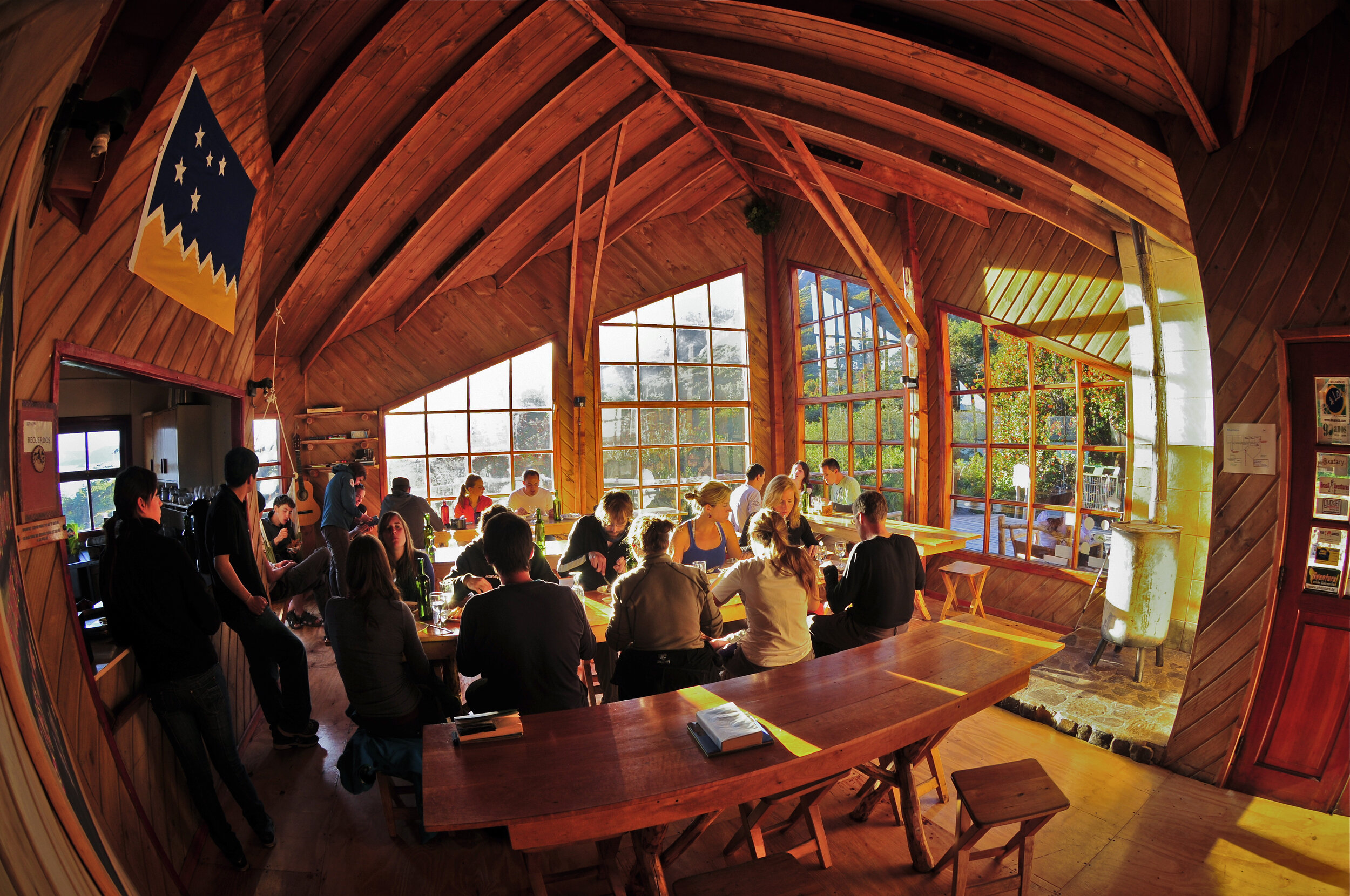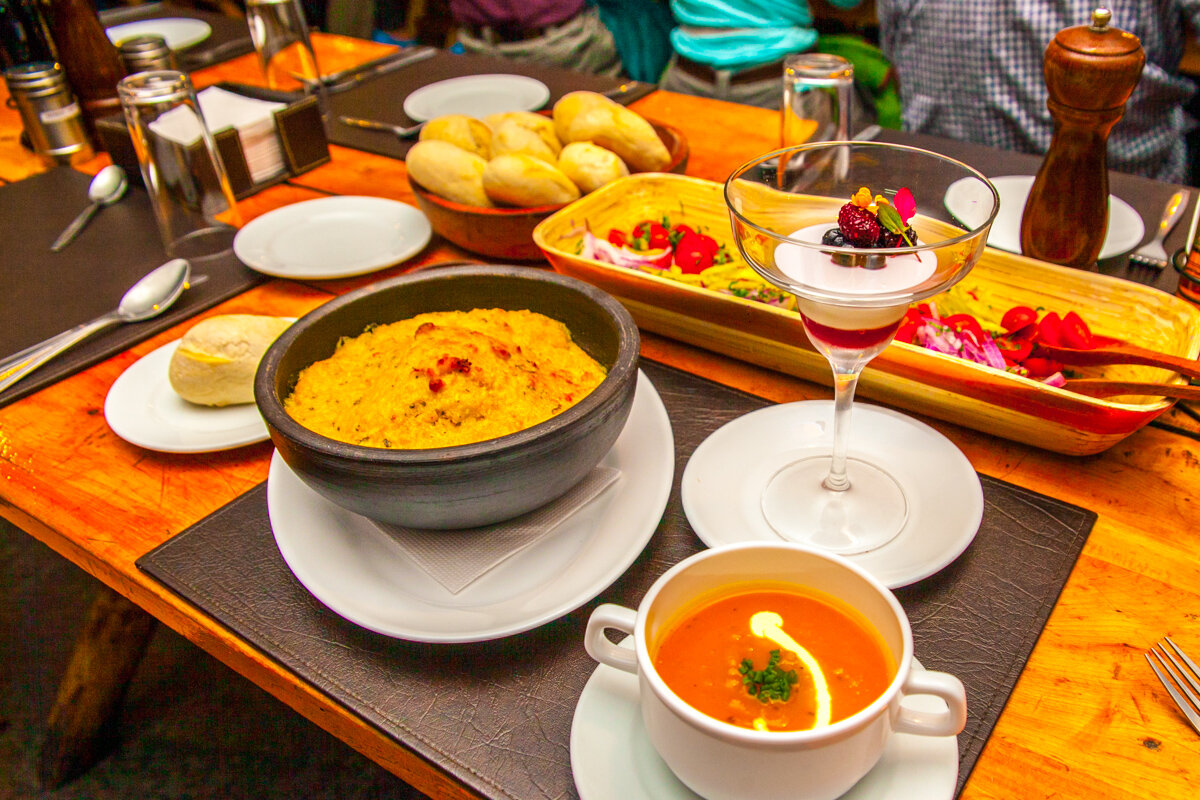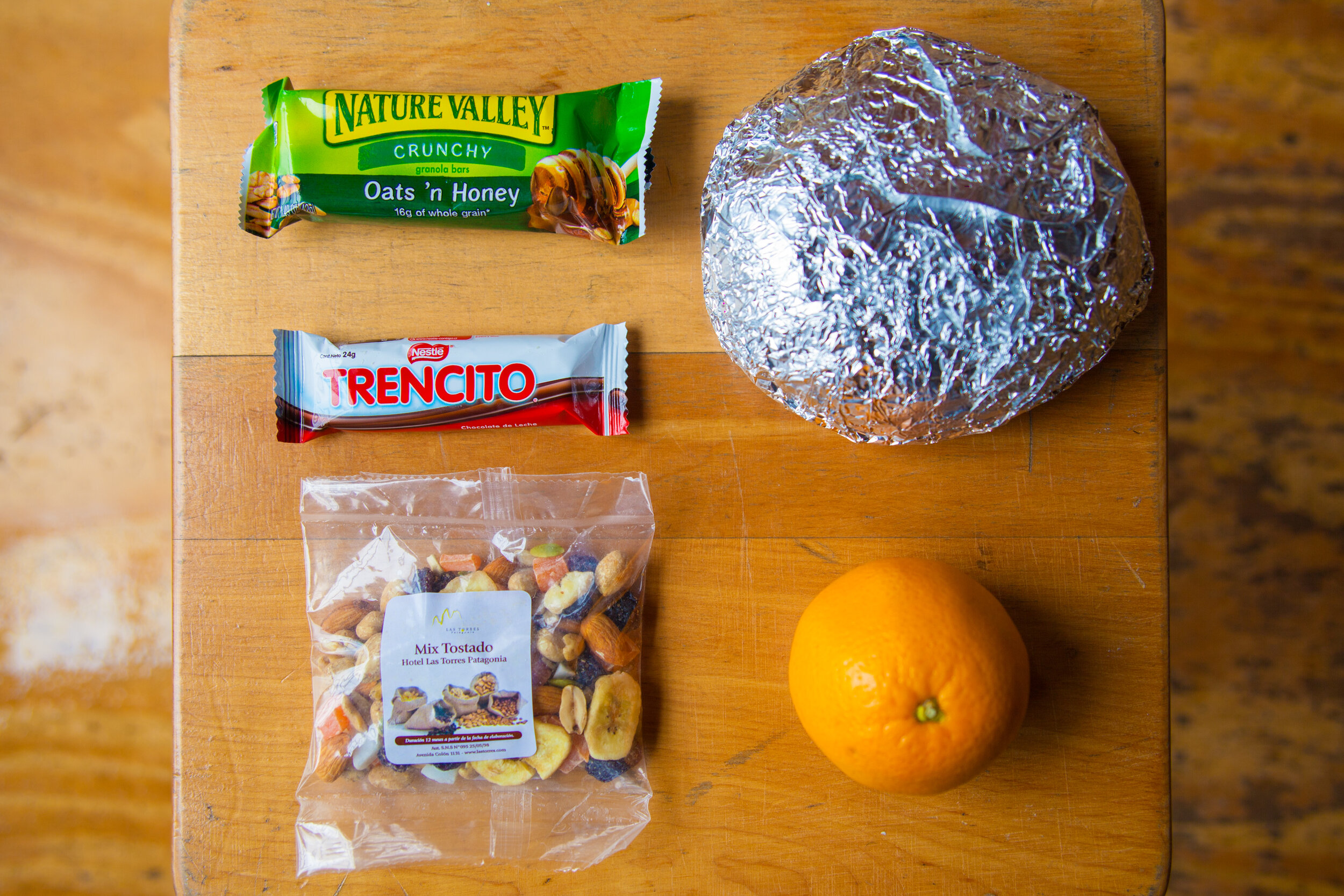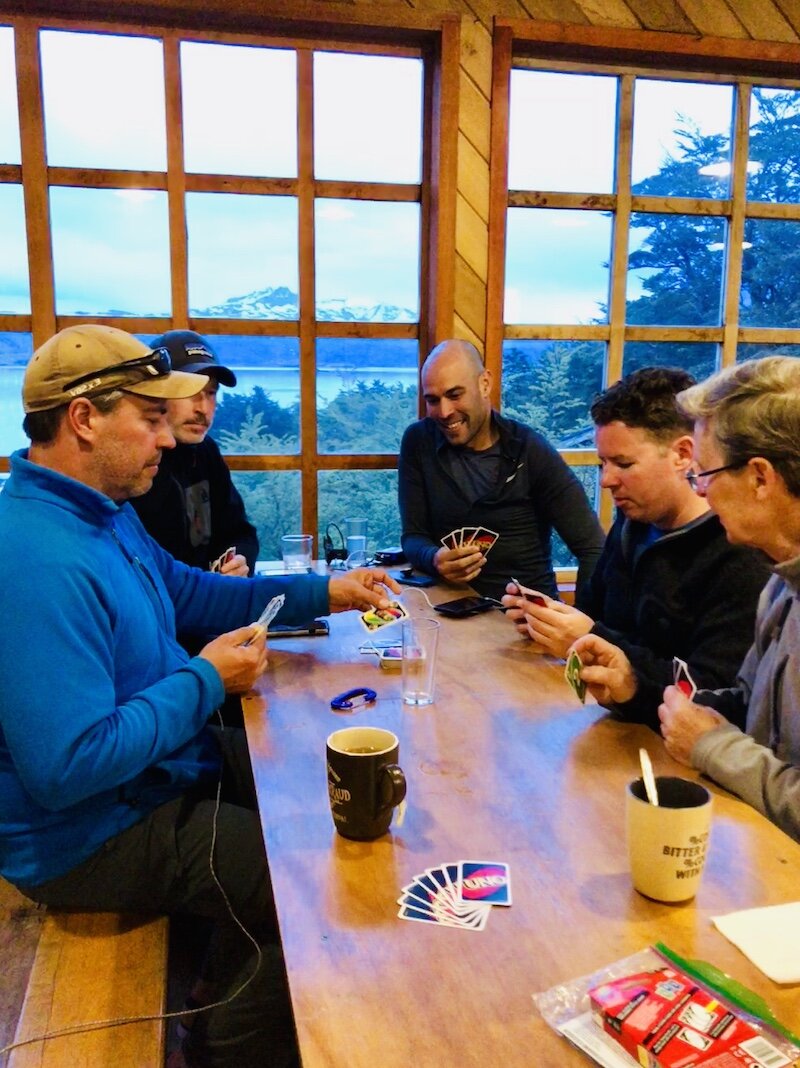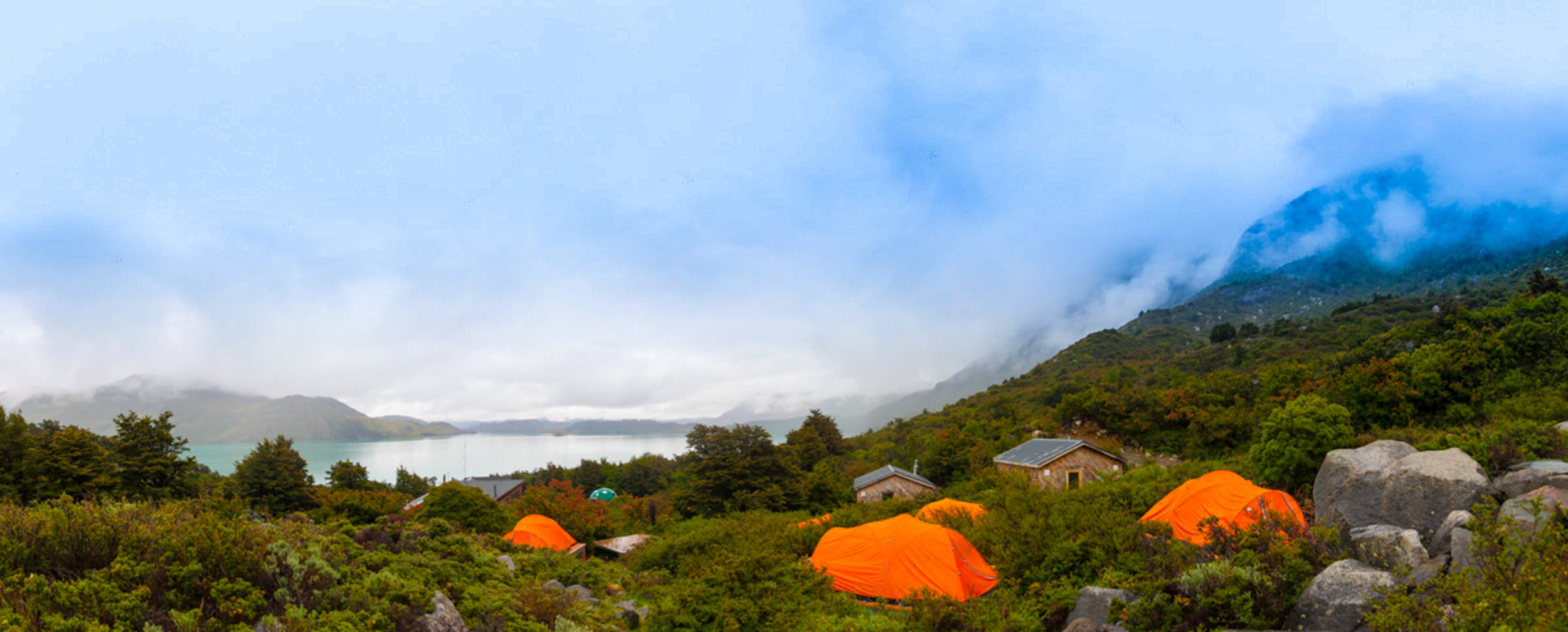If you’re planning to hike the ‘W’ or Full Circuit Trek in Patagonia’s Torres del Paine National Park, you will be staying at refugios, either inside the bunkrooms or in the nearby tents. Pronounced reh-foo-hee-oh (meaning refuge or shelter), these mountain lodges offer hikers a place to rest and relax after a long day of trekking. Here’s what to expect when staying at these unique mountain lodges in Chilean Patagonia:
SLEEPING ACCOMMODATIONS
On OneSeed trips, you will either sleep inside the refugios or in the nearby tents, depending on your departure. Please contact us for your exact sleeping arrangements.
If you have booked based on double occupancy, you and your travel companion will share a tent. If you have paid a solo supplement, solo tents are provided for tent camping. Tents have a thick foam mat provided, but you may want to bring a small inflatable mat if you prefer a bit more padding.
Nights spent in dorm rooms are always shared. Refugios all have dorm-style sleeping arrangements with 4-8 bunk beds in a single room as well as campgrounds with single or double occupancy tents. We utilize a combination of tents and indoor accommodations along the trail. Regardless of where you will be sleeping each night, travelers have access to indoor, heated common areas and basic restrooms with running water and showers (hot water TBD).
All beds in indoor accommodations are twin-sized and a pillow is provided. Our guides will always attempt to get everyone in the group in the same room but that can’t always be guaranteed. It’s important to note you may be sharing these rooms with other travelers on the trail not affiliated with OneSeed.
Some refugios, especially in the early season, provide sheets and a comforter so a sleeping bag won’t always be necessary but bedding is never guaranteed. It’s hard to predict if a refugio or room will have bedding so always err on the side of caution and bring your sleeping bag. The rooms are not winterized which is why we suggest a sleeping bag with a 15 degree Fahrenheit rating regardless of whether you will be sleeping in unheated indoor accommodations or tents on a given night. Also be sure to pack comfortable clothes and slippers (or crocs, sandals or non-hiking boots of choice) for walking around the refugios at night.
BATHROOMS
All refugios have a men’s and women’s bathroom with anywhere from 3-6 toilet stalls and 2-4 showers. There IS hot water but it takes some luck getting it. If you want a hot shower your best bet is going right when you arrive at the refugio or early in the morning before you start your hike. After dinner gets busy and your chances of a hot shower are slim.
If you are tent camping, you will also have access to bathrooms and showers.
POWER OUTLETS AND WIFI
There are power outlets in the refugios but they’re only in the main common areas, usually not in the bedrooms. Refugio Grey will be the only lodge along your trek with power outlets in the dorm rooms, so you may want to bring a small portable battery charger. If you are tent camping only, we recommend a portable battery charger. Most refugios will have a power strip at the front-desk for you to charge your electronics. Your best bet at getting a power outlet is when you first arrive at the refugio. Be sure to keep your phone on “airplane mode” to save energy and prevent any data charges. You will likely need an adapter, and we recommend a universal adapter such as this one.
Speaking of data, there is wifi at the the refugios! Every lodge has wifi for around $10 for 8 hours of service. You won’t be able to stream Netflix (but who wants to when you’re surrounded by such beauty) but you will be able to check email, texts and post updates to social media.
FOOD AND DRINKS
There is no shortage of food along the ‘W’ route! Breakfast typically consists of scrambled eggs, toast, ham, cheese, granola, yogurt, fruit, coffee and tea. Lunch is always a sandwich with either turkey, salami or veggies. Vegetarian diets can be accommodated and gluten-free bread is available. In your lunch bags, you’ll also have fruits, nuts, and chocolate but if you’re a big snacker, be sure to pack extra protein bars. Dinner typically consists of a protein (either chicken, beef or fish), a vegetable (peas, sweet potatoes) and a carb (rice, mashed potatoes or bread). If you’re vegetarian we do suggest bringing extra protein bars as non-meat sources of protein are rare.
Another great thing about the refugios is they all have a full bar and gift shops where you can buy snacks, postcards and other souvenir gifts and toiletries you may have forgotten like a toothbrush. A glass of wine or beer costs around $8 and they do take credit cards but be sure to bring Chilean cash as well just in case the machines are down.
KEEPING YOUR THINGS SAFE
There isn’t secure storage in the refugios so do not bring anything of value. You will almost always have your backpack with you but there are a few nights where you’ll be sleeping in the same camp for two nights in a row and will only take your daypack with you and leave your backpack behind. Always keep your cash, credit cards and passport on you. Don’t leave your cell phone in the cafeterias and as tempting as it is to do laundry and let your clothes dry by the communal fireplaces, don’t do it. Theft is rare but it has happened, so keep your belongings close to you. On the nights you stay inside a refugio, a locker will be in each room, but you will need to provide your own small lock.
PACKING DOS AND DONT’S
Leave your computers and hairdryers at home! The wifi isn’t strong enough to support anything where a laptop would be necessary and the bathrooms don’t have power outlets for hairdryers. There is also no need for water filters as the water in Patagonia is safe to drink. You’re carrying everything in your backpack and a light bag = a happy hiker. A few things you may want to throw in your bag:
earplugs and/or earphones for sleeping at night
a deck of cards for hanging out in the refugios after dinner
pajamas/lounging clothes and slippers/sandals/crocs
DIFFERENCES BETWEEN REFUGIOS
The refugios along the ‘W’ trek are run by two different companies; Fantastico Sur and Vertice Patagonia. Fantastico Sur is family-owned on private land inside the park. These lodges include Refugio Torres (right by the base of the towers) and Refugio Cuernos. The other refugio company, Vertice Patagonia, owns and operates Refugio Paine Grande and Refugio Grey as concessions.
Each refugio has its own unique charm and each differs greatly, especially those owned by Fantastico Sur versus those owned by Vertice Patagonia. Refugio Torres offers a fireplace and amazing outdoor seating for a sunset or sunrise view of the towers. Refugio Cuernos is nestled in the forest giving it a tree-house feel with an amazing view of Lake Nordenskjöld. Paine Grande is the largest of all the refugios while Refugio Grey is the smallest, giving it an intimate feel. There’s also a nice front porch at Refugio Grey which is the perfect place to rest your legs and have a beer at the end of a long hike.



